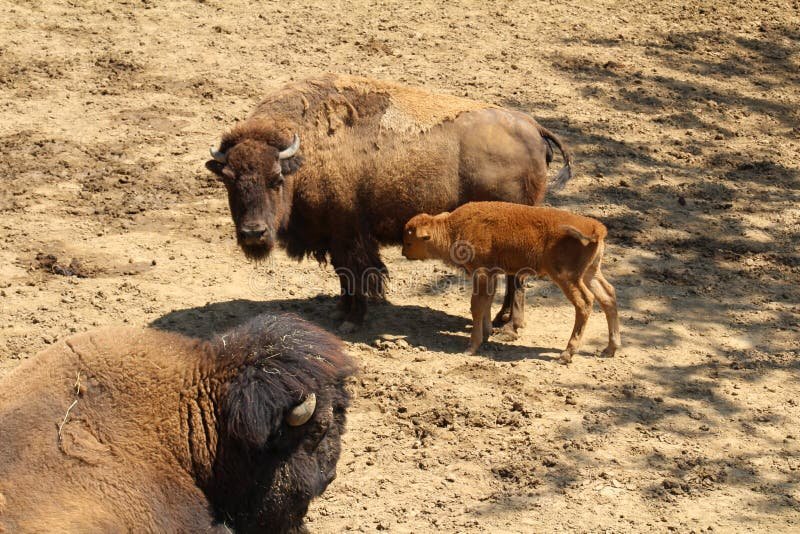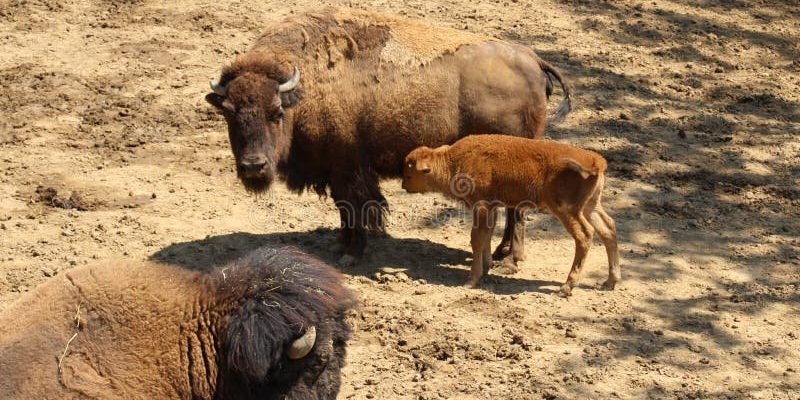
Buffalos, specifically the African and American varieties, have unique methods of raising their young. The bond between a mother buffalo and her calf is similar to that of a human parent and child. From the moment a buffalo calf is born, it enters a world where survival depends on teamwork and instinct. Let’s dig into the fascinating ways buffalos care for their little ones in the wild.
The Birth of a Buffalo Calf
Buffalo calves are born after a gestation period of about 11 months. This lengthy pregnancy ensures the calf is sufficiently developed to thrive in the wild once it arrives. Most often, calves are born during the rainy season when food is plentiful, giving them the best chance to grow strong.
The birth usually occurs away from the main herd. This instinctive behavior helps protect the newborn from predators, who might be lurking nearby. Once the calf is born, the mother will lick it clean, encouraging it to stand and walk shortly after birth. This is crucial because a calf that can stand and move is much less vulnerable to threats.
You might be wondering what happens next. The mother stays close to her calf, often keeping it under her watchful eye. This attachment is vital—without that bond, the calf wouldn’t learn survival skills or social cues needed to thrive in the herd.
The Role of the Herd in Calf Rearing
Here’s the thing: buffalo aren’t solo creatures; they live in herds. And this communal lifestyle plays a significant role in raising their young. Within the herd, older females help babysit the calves, creating a support system that ensures each young buffalo receives the attention it needs.
For instance, if a mother needs to graze or move away for some reason, other females in the herd will step in. They’ll create a protective circle around the calves, deterring predators and ensuring safety. It’s like having a village take care of its children, where every member feels responsible for the young ones.
This cooperation also helps calves learn essential social skills. By interacting with different members of the herd, they understand their place in the social hierarchy and develop the skills needed for future interactions, both among their peers and with adult buffalos.
Feeding and Nutrition
When it comes to feeding, buffalo calves rely entirely on their mothers for nutrition in the beginning. A mother buffalo will typically nurse her calf for about six months. The milk is rich in nutrients, helping the calf grow rapidly.
Once the calf starts to get a bit older, around 3 to 4 weeks, it begins to graze on grass along with its mother, mimicking her actions. This natural behavior teaches the young buffalo which plants are safe to eat.
You might think about how tough it can be for young animals to find food in the wild, but buffalo calves are fortunate. Buffalos are social grazers, often moving to areas with abundant grass. This group foraging not only helps the calves learn what to eat but also keeps them protected while they eat.
Protection Against Predators
Buffalos have a reputation for being strong and fearless, especially when it comes to defending their young. Predators like lions and hyenas are always on the lookout for an easy meal, and buffalo calves can be vulnerable. This is where the herd’s defensive strategies come into play.
When they sense danger, adult buffalos will form a protective circle around the calves. This formation not only shields the young but also gives them a chance to escape while the adults confront the predator. It’s a powerful display of unity and strength that can be quite awe-inspiring.
Interestingly, buffalo can also use their sheer bulk to intimidate potential threats. When faced with a confident herd, predators often think twice about attacking, knowing they might end up in a tough spot themselves!
Learning Social Behavior
As buffalo calves grow, they become more independent but still heavily rely on their mothers and the herd. This is an essential time for social learning. Calves observe and imitate adult behavior, which is crucial for their development.
For example, they watch how their mothers interact with other herd members, learn to recognize distress signals, and understand the herd’s dynamics. This learning is often playful, with calves engaging in sparring matches that teach them how to handle themselves socially.
Over time, they establish their roles within the herd, which can affect their future interactions and breeding. It’s fascinating to see how these seemingly simple moments contribute to forming a strong and cohesive buffalo community.
The Importance of Lifelong Bonds
Strong bonds with their mothers develop from birth and often last a lifetime. Even once they are weaned, buffalo calves maintain close relationships with their mothers. This connection is particularly evident during social interactions, as young buffalo often stay close to their moms as they learn the ropes of herd life.
Interestingly, female buffalos will often return to the same area where they were born to raise their own young. This behavior strengthens family ties within the herd and ensures that knowledge about the best grazing spots and safe areas is passed down through generations.
In many ways, the bond between a mother buffalo and her calf resonates with the human experience—filled with love, protection, and guidance.
Buffalos raise their young in a fascinating and intricate manner, reflecting the complexities of life in the wild. From the protective instincts of mothers to the supportive roles of the herd, every aspect plays a vital role in ensuring the survival of the next generation.
Understanding how buffalos care for their young helps us appreciate the beauty and challenges of wilderness life. With their unique social structure and strong maternal bonds, these creatures showcase something truly special: a community thriving together in the heart of nature. So, the next time you think about buffalos, remember it’s not just about their size and strength. It’s also about the heartwarming ways they nurture and raise their young.

